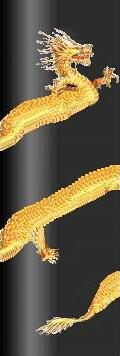 |
 |
 |
 |
 |
 |
 |
 |
 |
 |
|
 |
 |
 |
 |
 |
 |
 |
 |
|||
 |
 |
 |
 |
 |
 |
 |
 |
 |
 |
|
 |
 |
 |
 |
 |
 |
 |
 |
|||
 |
 |
 |
 |
 |
 |
 |
 |
 |
 |
|
 |
 |
 |
 |
 |
 |
 |
 |
|||
 |
 |
 |
 |
 |
 |
 |
 |
 |
 |
|
 |
 |
 |
 |
 |
 |
 |
 |
|||
 |
Please Visit Our Sponsor  Gift Shop Copyright Yutopian 2000 Languages of the world can be divided into three main categories, 1) pictograms, 2) phonograms, and 3) a combination of the two. In the past, most people considered the Chinese language, the Egyptian hieroglyphic (speech of gods), and Mesopotamia language of Sumerian, as pictograms. However, these three languages also contain a large amount of phonic characters, thus should not be grouped under pictograms alone. Signs with related meanings are pictograms, signs with related pronunciations are phonograms, signs with no meaning or phonic relationships are just symbols. The Chinese language makes use of pictograms and ideograms extensively. Pictograms are characters that represent the object of the picture. Ideograms are characters that represent ideas. Both of the above are used as radicals in the Chinese characters. For example, the ancient character of the word sun consisted of a circular object with a dot in the center, a pictogram that looks like the sun. The pictogram of the word sun is then used as an ideogram of radical to represent the idea of shinning or brightness. For example, a radical of the ideogram 'sun' combining with the radical of the ideogram 'moon' gives the word 'bright'. To be continued Bookmark This Page Send This Page To A Friend 
Place Your Ad Here For As Little As $1 Per Day About Us | Add URL | Advertise with Us | Auction | Awards | Contact Us | Discussion Forum | Links | Search This Site | Send This Page | Shop | Top Ten Sites Copyright 2000 Yutopian, All Rights Reserved |
        |